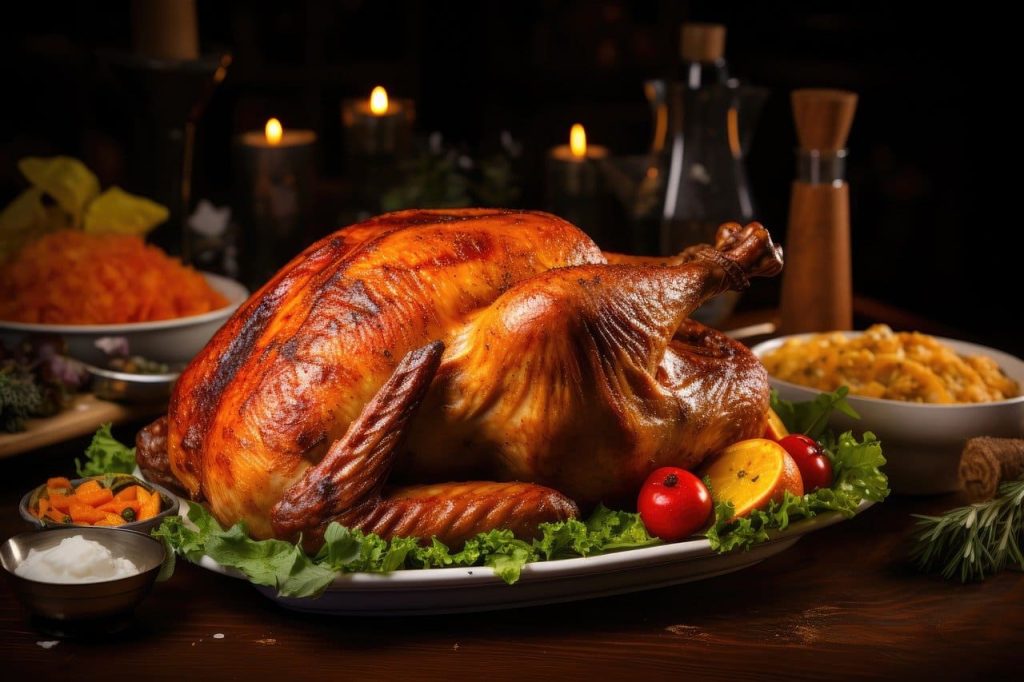
Ah, the turkey—America’s majestic bird that somehow manages to make every holiday meal feel special, even if you’re just heating up leftovers. Whether it’s Thanksgiving, Christmas, or a random Tuesday (because why not?), cooking a turkey can be both exciting and, let’s face it, a little terrifying. But don’t worry—I’m here to walk you through it, blending some tried-and-true methods with a bit of humor and honesty. By the end of this, you’ll have a turkey so good, your family might just forget about Aunt Linda’s famous (and slightly terrifying) cranberry sauce.
Step 1: Pick Your Turkey (And Maybe Pray)
First things first: picking the right turkey. You’ve got options. Frozen or fresh? Honestly, if you have the time, fresh is great, but frozen can be a life-saver—especially if you’re someone who remembers to buy the turkey the day before the holiday. Pro tip: if you go frozen, make sure to give yourself plenty of time to thaw. You don’t want to end up with a bird that’s still icy in the middle when it’s time to serve.
Also, how big should it be? As a general rule of thumb, plan for about 1 to 1.5 pounds of turkey per person. So, if you’re cooking for 10 people, that’s around a 12-pound turkey. And if you’re feeding 50, well, best of luck—and maybe consider a couple of backup turkeys.
Step 2: Prep Your Turkey (Because It’s Not Going to Cook Itself)
Now that you’ve got your turkey, it’s time to prep it. And yes, I know—this part feels a little… intimate. You’re going to want to remove the giblets and the neck from the cavity. If you’re lucky, the giblets will be neatly packaged in a plastic bag. If not, congratulations, you’ve got a bit of a surprise waiting for you. Just make sure they’re out of there before you start seasoning, or things could get a bit weird.
Once your turkey’s cavity is nice and empty (don’t worry, we’re not judging), rinse it under cold water. This part’s kind of unnecessary, but it makes you feel like a pro. Afterward, pat it dry with paper towels because a moist bird will not crisp up like you want it to. And trust me, crispy skin is the goal.
Step 3: Season Like You Mean It
Seasoning a turkey is where you can really let your personality shine. You can go simple with salt, pepper, and a little garlic powder. Or, you could go all-out, like you’re auditioning for a Food Network show, with herbs, citrus, and butter stuffed under the skin. (And if you don’t know how to get butter under the skin, there are plenty of YouTube tutorials to show you exactly how to do it without ripping the bird in half. It’s an art, not a science.)
I love to go heavy on the butter. In fact, I may or may not use half a stick just to rub the skin down. Is that excessive? Probably. But do I care? Absolutely not. Throw in some thyme, rosemary, and a little lemon zest for good measure. The turkey will be thankful, and so will your taste buds.
Step 4: The Roast—Let’s Do This
Preheat your oven to 325°F. This is the sweet spot where the magic happens. You’ll want to cook your turkey for about 13 minutes per pound, which means that 12-pound turkey should roast for about 2.5 to 3 hours. This, of course, can vary depending on your oven (because no two ovens are created equal), so don’t just walk away for the whole thing. Get yourself a good meat thermometer—one that you can just leave in the bird to keep track of the temperature without opening the oven every 10 minutes to check.
Speaking of opening the oven, don’t do it too often! Every time you open the door, you let all that precious heat out, which means it’ll take longer to cook, and the skin might not get as crispy. Keep that oven door closed as much as possible, my friend. And trust me, it’s totally okay to baste it a couple of times—just don’t overdo it. You’re not making a turkey soup, you’re roasting, so just enough to keep the skin nice.
Step 5: The Resting Game (Patience, Grasshopper)
Once your turkey is out of the oven and beautifully golden brown, it’s very important to let it rest. I know, I know—it’s tempting to dive in right away and start carving. But I promise you, the bird will taste better if you let it sit for at least 20 minutes. This allows the juices to redistribute, so your turkey isn’t dry and sad when you finally carve it.
Also, you can’t forget to carve the thing. Now, I’m not saying you need to be a pro like some of the top chefs on Instagram, but it’s nice to at least try to make the slices somewhat uniform. If it gets messy, that’s okay—just tell your guests it’s “rustic.”
Step 6: The Moment of Truth (And More Than a Little Bragging)
When it’s time to serve, take a moment to pat yourself on the back. You’ve successfully cooked a turkey without setting off the smoke detector or accidentally incinerating it. The skin is crispy, the meat is juicy, and the aroma fills the house like you’ve just created a masterpiece.
And let’s be honest—nothing beats the “Oohs” and “Aahs” you’ll get from your friends and family when they take their first bite. If you’re lucky, you might even hear someone say, “This is the best turkey I’ve ever had!” And when that happens, my friend, you know you’ve made it.
So, there you have it—my not-so-perfect guide to cooking a turkey. It’s easy, it’s fun, and it’s definitely worth the effort. Remember, the most important part of cooking a turkey is not just the recipe—it’s about enjoying the process and making memories along the way. And maybe, just maybe, make a little extra gravy, because there’s never enough.
Happy roasting!

